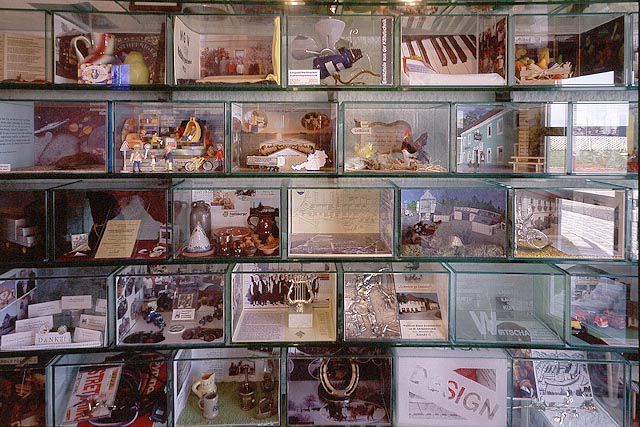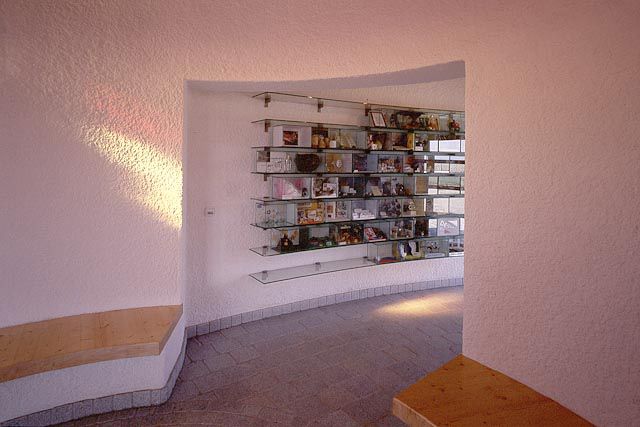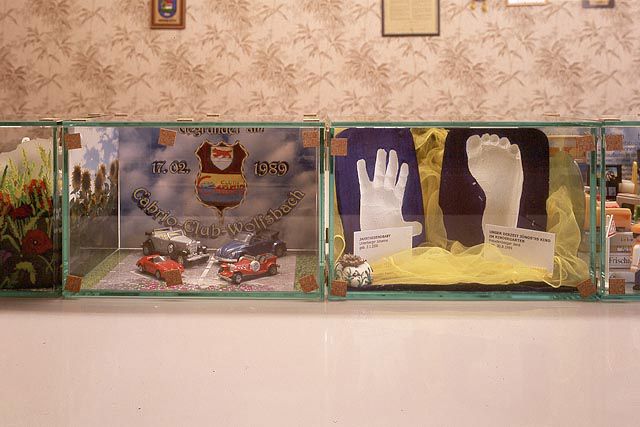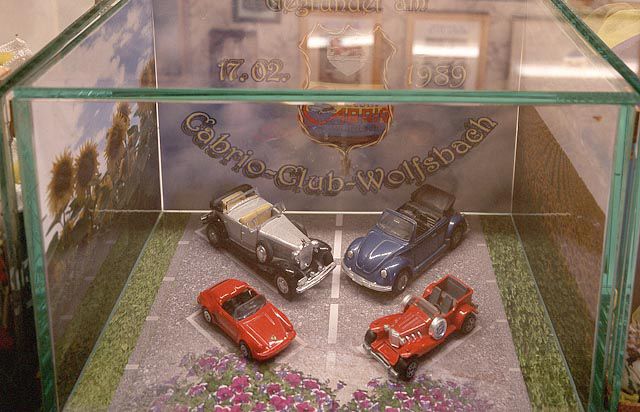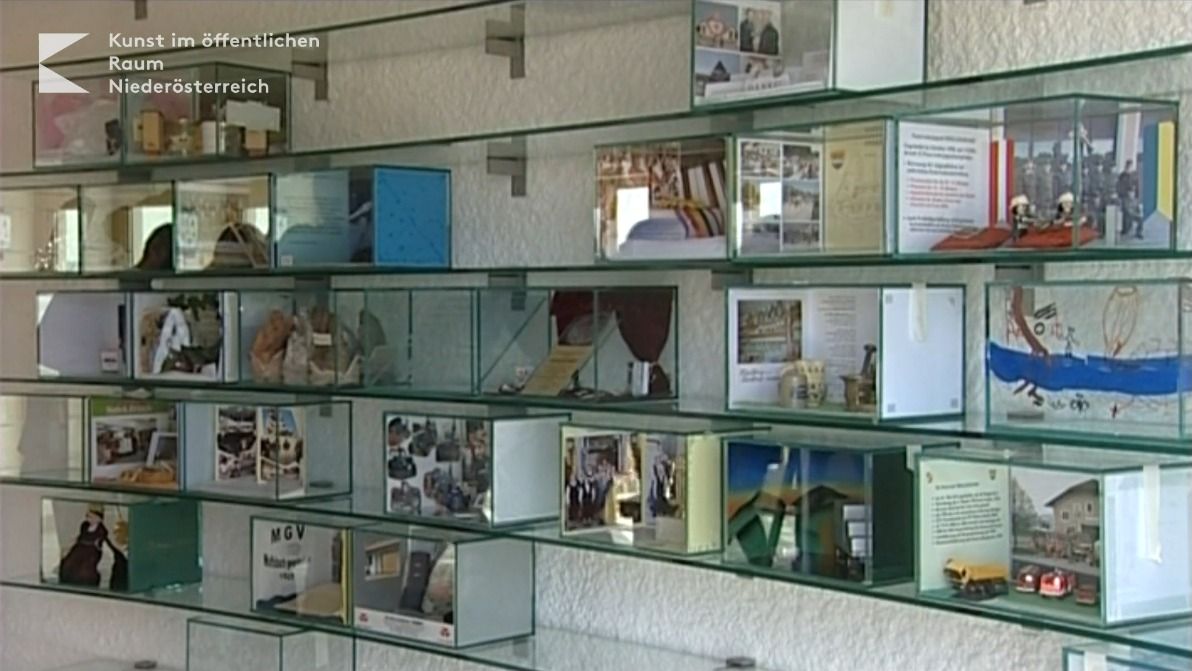Manfred Erjautz
:
Full House
Back
Information
Manfred Erjautz reacted to the wish for a portrait of the community with a request to local clubs and societies and individuals in the village to fill 120 glass cubes on glass shelves as they saw fit, to represent themselves, and then later to explain their artistic contributions in a film.
The village of Wolfsbach wished to develop the local tradition of keeping a family portrait in each Vierkanthof (rectangular farm house type built around an internal courtyard) by having a family portrait of the village made by an artist for the new chapel. The aim was to mirror the community at the beginning of the new millennium.
Manfred Erjautz responded to this wish by calling for active participation in order to provide the village with its own stage on which its identity and community could be presented. The aim of providing a complete picture was not achievable. The title 'Full House', in poker a high hand but not the highest, should therefore be understood in its double meaning. Erjautz attempted to depict with a momentary recording reality the way it is, a collection of individual realities. The artist did not wish to evaluate these individual realities, and so asked local societies, businesses and individuals to design a total of 120 glass cubes on long glass shelves in a way that would represent themselves and to later explain their artworks in a film. The artist accompanied the process without intervening in it. The local populace engaged in the project with considerable interest. 90 of the glass terrariums had already been filled by the opening date. The remaining space in the glass composition can be seen as a view outside – for a structure that can continue to grow.
(Cornelia Offergeld)
Images (5)
